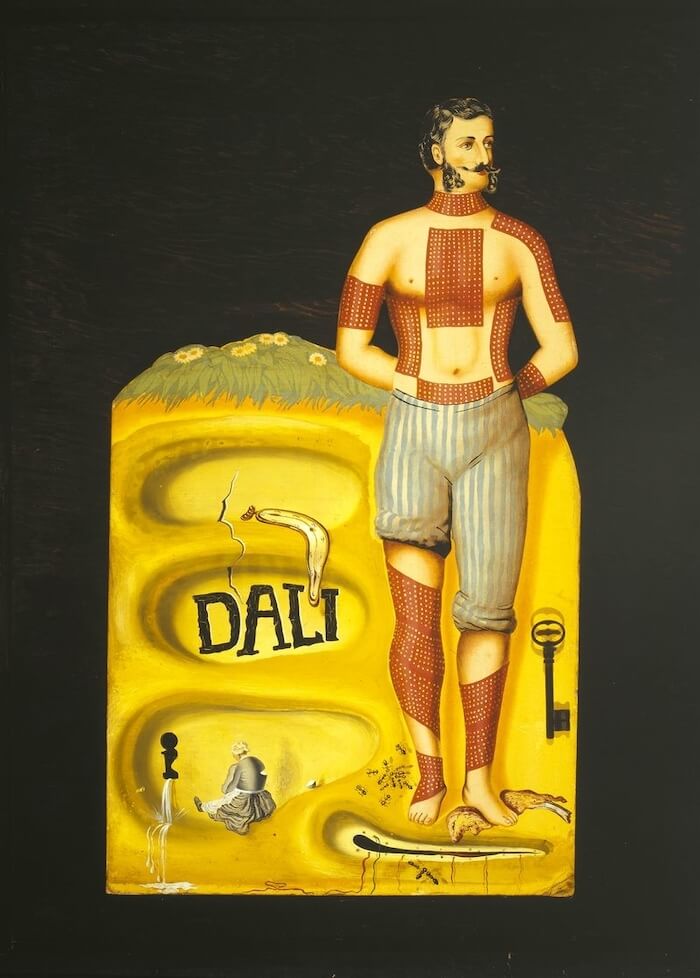Surrealist Poster, 1934 by Salvador Dali

Dali designed Surrealist Poster for his one-man show at the Julien Levy Gallery, New York, which ran from November 21 to December 10, 1934. Promoting Salvador Dali, the artist/commodity, the image is painted over an advertisement for a medicinal mustard plaster that had appeared in a Barcelona newspaper on January 12, 1920. Dali' s overpainting brings together his most familiar symbols: the limp watch, a keyhole spouting water, ants, an actual key affixed to the surface of the cardboard ground, a lamb chop, and the artist's nurse seated with her back to the viewer. The semi-clothed male figure, covered with bandages treated with the plaster, and the hillock with daisies in the background are the only traces of the original poster. Indeed, so exacting is Dali's technique that he effectively blurs the boundaries between the mass-produced and the painted images, producing what he referred to in the Levy catalog as:
Snapshot photographs in the color of subconscious images, surrealist, extravagant, paranoiac hypnagogic, extrapictorial, phenomenal, super-abundant, super-sensitive, etc. of CONCRETE IRRATIONALITY."
Dali's use of an outmoded advertisement was well in keeping with surrealist practices. Not only was Joan Miro's Peinture series of 1933 based on collages of machine parts culled from industrial catalog, but Max Ernst had produced his first surrealist book, La Femme 100 tetes of 1929, from rephotographed collages of Victorian engravings. In all three cases, a dual sense of nostalgia and distance obtains, as signs of the old and the recently obsolete implicitly set in motion a critique of commodity culture.























